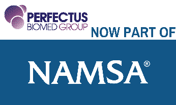Abstract
Objective: To estimate the clinical effectiveness and cost effectiveness of using a sodium carboxymethylcellulose dressing (CMC [Aquacel]) and four super absorbent dressings (DryMax Extra[DM], Flivasorb [F], Kerramax [K] and sachet S [S]) in the treatment of highly exuding chronic venous leg ulcers (VLUs) in the UK, from the perspective of the National Health Service (NHS).
Method: A decision model was constructed depicting the patient pathways and associated management of a cohort of 439 patients with highly exuding chronic VLUs of 3 months of age. The model was based on the case records of a cohort of matched patients from The Health Improvement Network (THIN)database (a nationally representative database of patients registered with general practitioners (GPs) in the UK) who were treated with one of the five dressings. The model estimated the costs and outcomes of patient management over 6 months and the relative cost-effectiveness of using each dressing.
Results: Patients’ mean age was 73.1 years, and 46% were female. Between 39% and 56% of VLUs healed by 6 months. CMC-treated wounds that remained unhealed increased in size by 43% over the study period, whereas unhealed wounds treated with the other dressings decreased in size by a mean 34%. Consequently, CMC was excluded from the cost-effectiveness analysis. The 6-monthly NHS cost of managing a VLU with S was £3700 per patient, which was 15-28% lower than the cost of managing patients with the other three super absorbents. Additionally, use of S improved patients’ health status to a greater extent than the other three super absorbents, since S-treated patients accrued 0.3-3% more QALYs. Starting treatment with S was the preferred strategy followed by DM, K and Fin that order.
Conclusion: Within the limitations of the data sets affords the NHS a cost-effective treatment for managing highly exuding chronic VLUs of ≥3 months of age, compared with DM, F, K and CMC.
